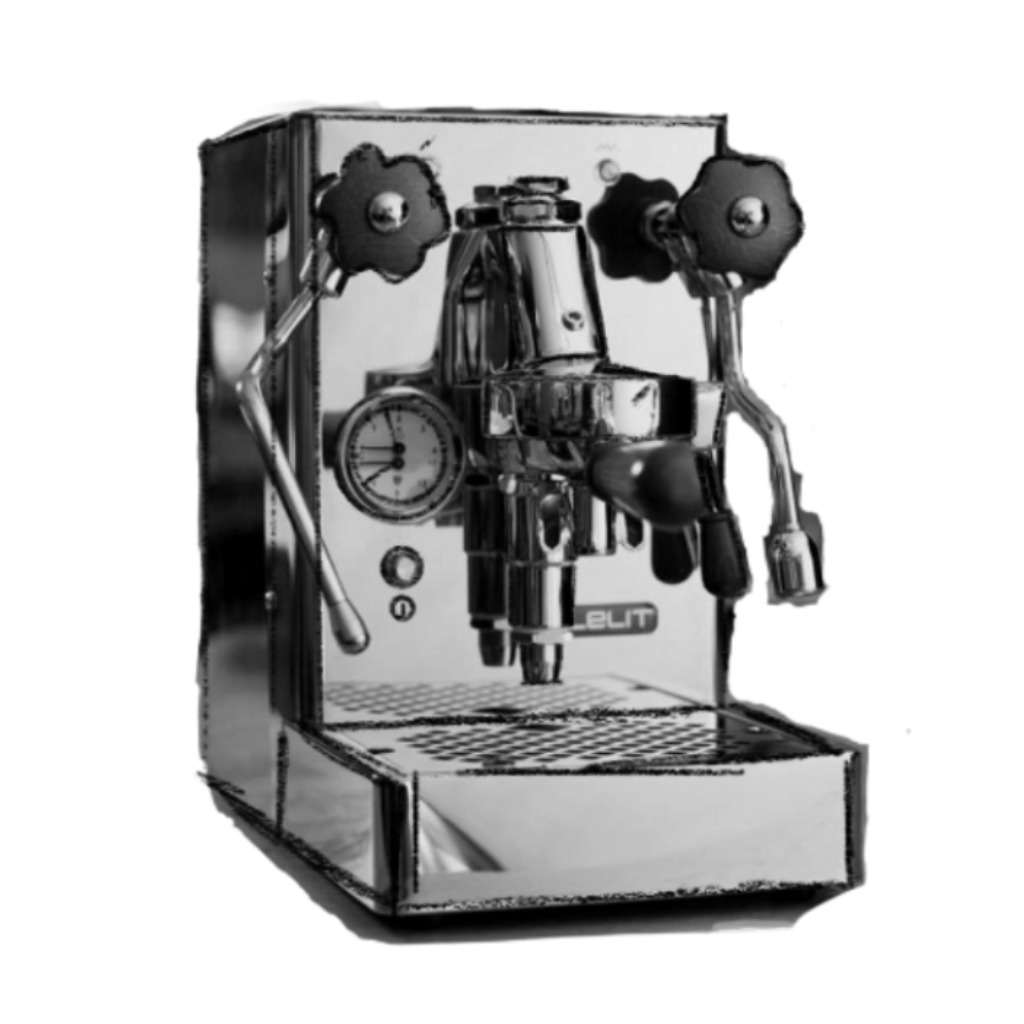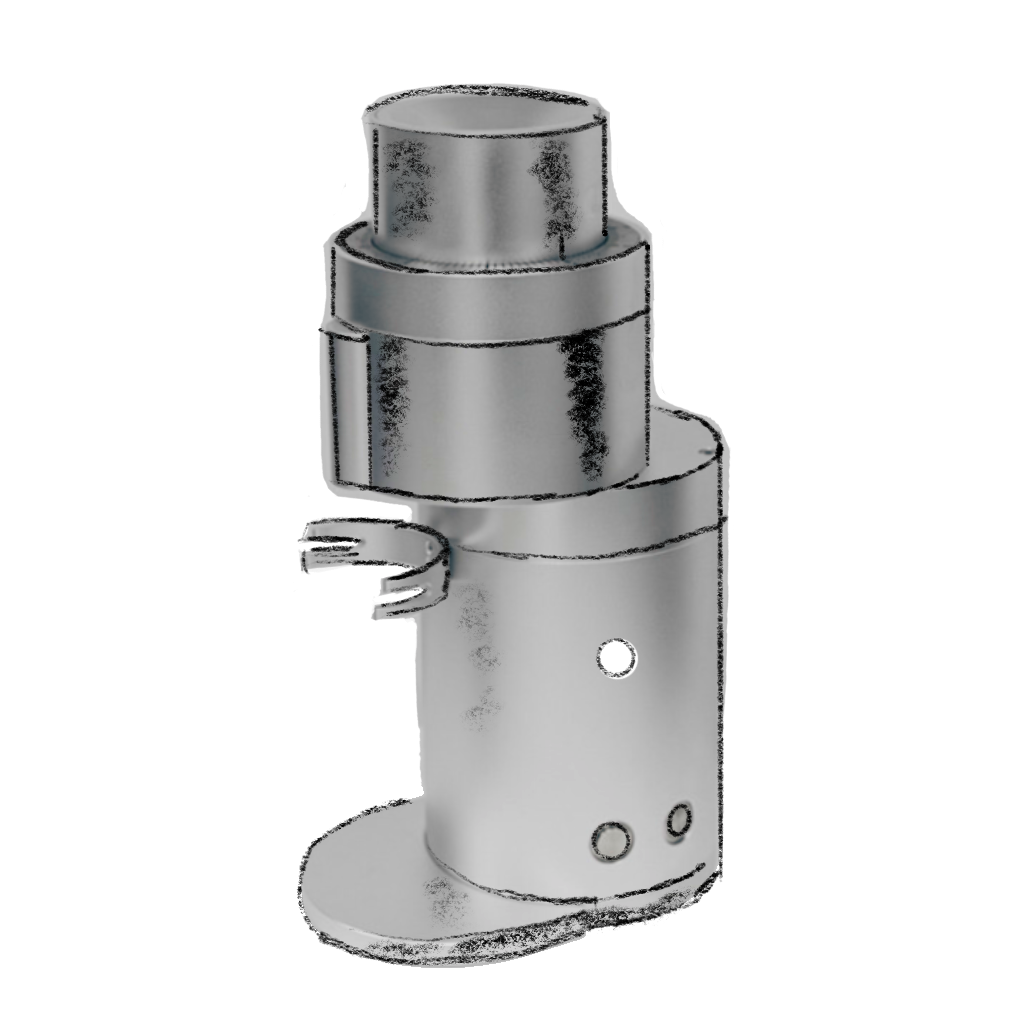Top 7 Best Espresso Beans For A Delicious Shot (Updated: 2025)
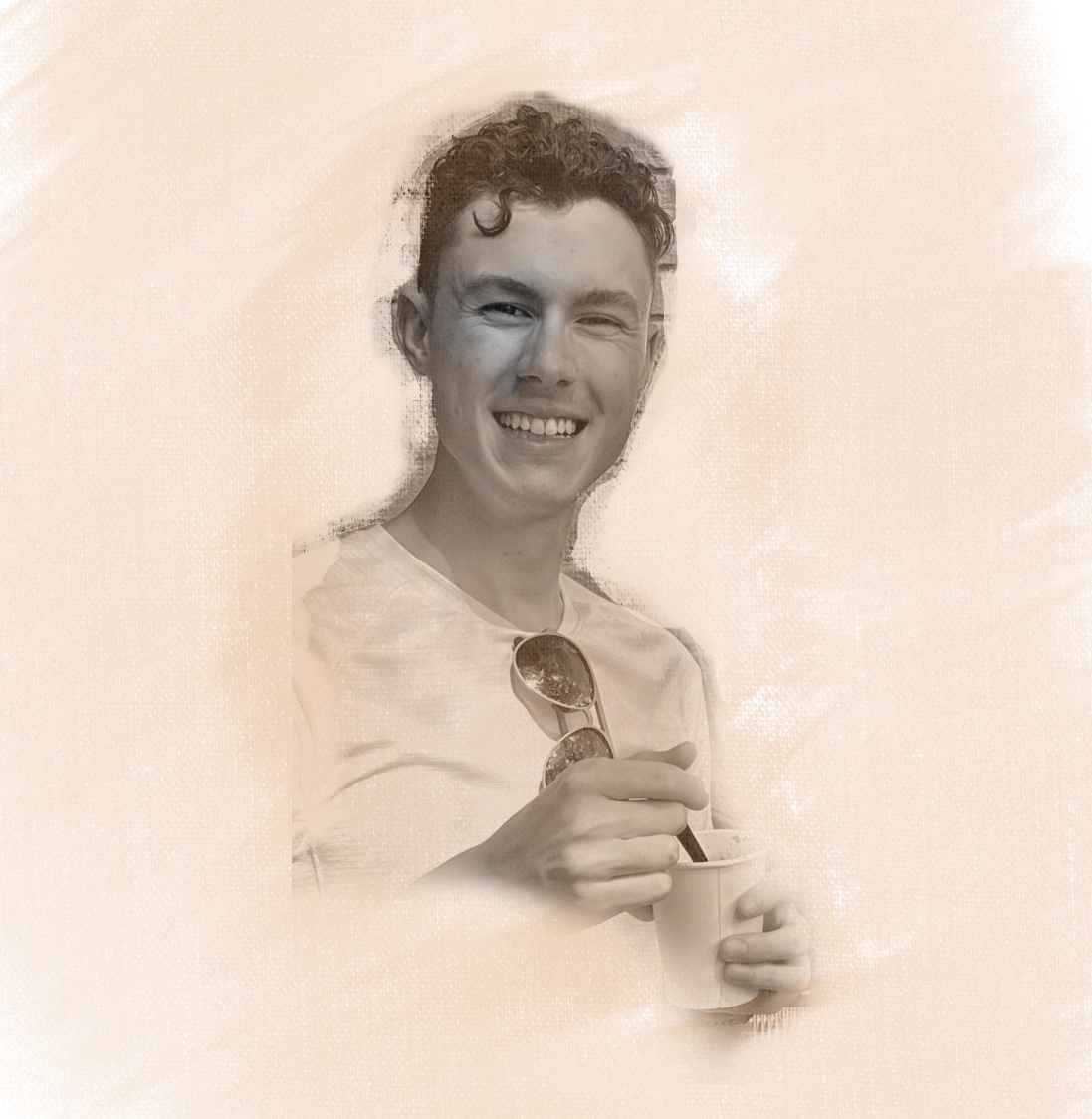
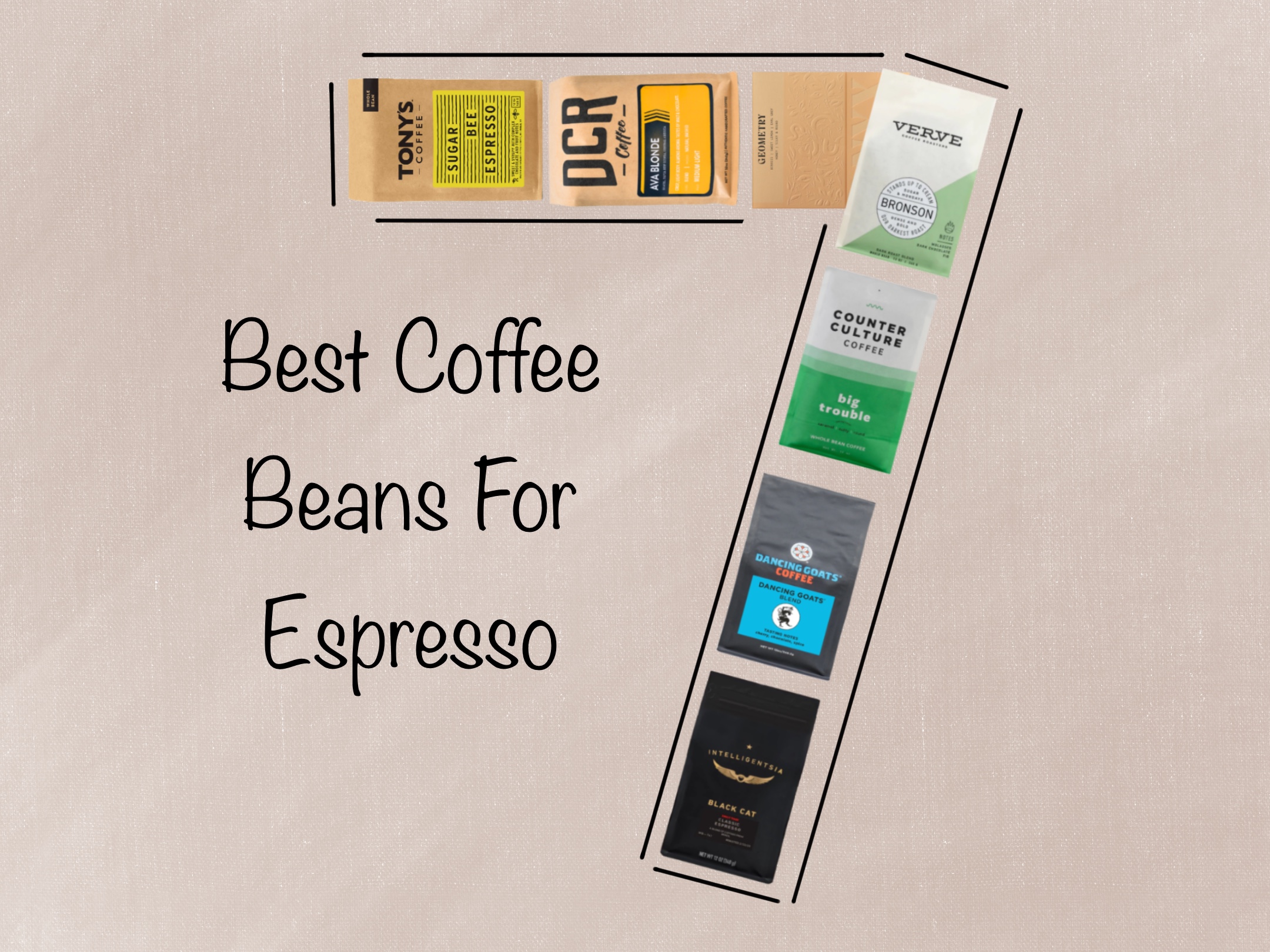
Quick Recommendation List
Roaster
Bean
Price
Quick Link
Table of Contents
Difference Between Coffee and Espresso Beans

Chemically the Same
At their core, espresso beans and regular coffee beans are the same; both are dried and roasted seeds from the coffee plant. Chemically, they share the same compounds, including caffeine and flavorful surges and oils. The primary differences lie not in their inherent nature but in how they are processed, roasted, and ultimately brewed.
All About the Roast.
The key distinguishing factor between espresso beans and regular coffee beans is the roasting process. Roasting is the process of applying high levels of heat to the dried 'green coffee' seeds to transform them into roasted coffee beans ready to be ground and brewed. Espresso beans are generally exposed to heat for a longer period, resulting in a darker roast. This darker roast helps to lower the acidity and enhance the body and perceived sweetness, which is crucial for the concentrated nature of an espresso shot.
On the other hand, regular coffee beans are used in various brewing methods, from drip to pour-over. They can vary widely in their roast level. This range allows for a broader spectrum of flavor profiles, from light and fruity to dark and rich.
Origin & Storage
The origin of the coffee also plays a role in the resulting flavor characteristics. Beans from different regions bring unique flavors influenced by local climate, humidity, soil, and altitude. For espresso, beans naturally exhibiting a rich, full body and low acidity are often preferred to complement the espresso brewing process. Storage is equally important for both types of beans. They should be kept in a cool, dry place, away from direct sunlight and moisture.
How Do Espresso Beans Taste?
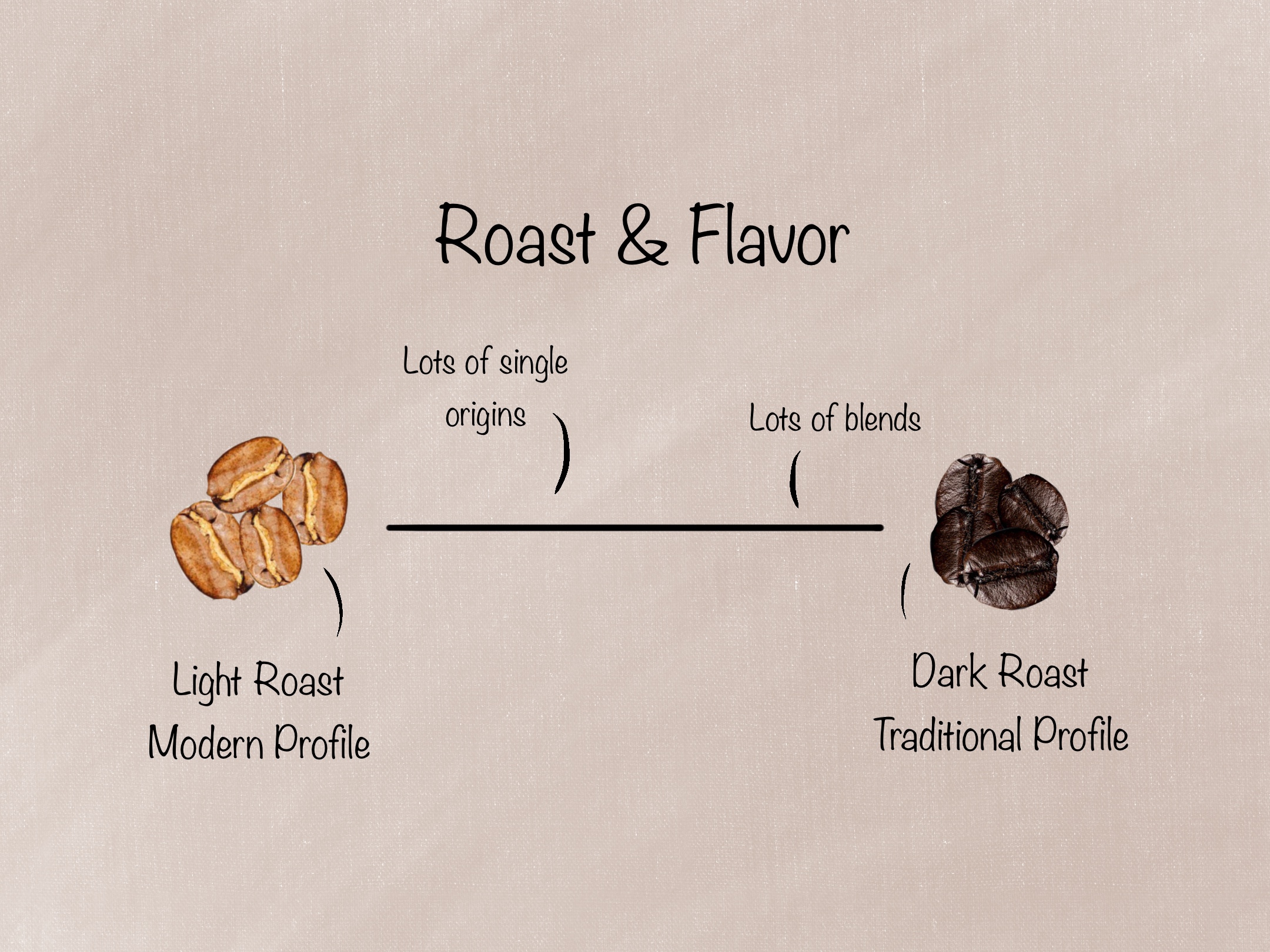
A Wide Range
Although espresso beans are often known for their dark roasts and smoky profiles, they actually offer a wide range of flavors, varying significantly based on origin, roast, and blend. To keep things simple, this range of flavors can be categorized into 'traditional' flavors and more 'modern' flavors.
Traditional
Classic espresso beans are characterized by their robust and bold flavor profiles, typically featuring prominent notes of dark chocolate, nuts, caramel, and a hint of smokiness due to the darker roast. These beans often possess a full body, contributing to the rich and creamy texture of the espresso shot. Such flavors are especially prevalent in classic Italian espresso, aimed at delivering a robust and substantial shot that can boldly interact with milk in lattes and cappuccinos.
Modern Profiles
Modern espresso beans break away from traditional norms by embracing a broader spectrum of flavors. Many roasters are now experimenting with lighter roasts that accentuate the unique characteristics of the bean's origin.
These contemporary espresso varieties can showcase bright acidity, fruity tones, and floral notes, providing a more nuanced and delicate cup. This shift is part of the third-wave coffee movement's emphasis on high-quality, artisanal coffee production, spotlighting coffee beans' diverse and inherent flavors.
Blends & Single Origins
The distinction between blends and single-origin beans also plays a significant role in the taste of espresso. Blends are a combination of beans from multiple origins, chosen and combined by roasters to create a specific flavor profile. The goal of a blend is to balance the individual characteristics of each type of bean, resulting in a harmonious and consistent taste.
Blends are particularly appreciated for their ability to deliver a uniform flavor that remains stable across different batches and seasons. They often harmonize contrasting flavors - like sweetness and acidity - to achieve a crowd-pleasing and balanced espresso.
In contrast, single-origin espresso beans come from one specific location, whether a single farm, a particular region, or, in some broader cases, a single country. These beans reflect their unique geographic origin characteristics, including the local climate, soil conditions, and cultivation methods.
ns tend to have a more distinct and pronounced flavor profile than blends. For example, African beans are often recognized for their bright and fruity notes. In contrast, beans from Indonesia are known for their earthy and spicy flavors. These beans offer a very specific flavor profile that can be lost in a blend with many different inputs.
How To Choose Your Bean?
Freshness is Key
The freshness of espresso beans is critical in achieving the best possible flavor. Using fresh beans ensures you get the fullest expression of the coffee's flavor profile. Look for beans with a roasted date, not a best-by date. Ideally, you should use your beans within 2 to 6 weeks of their roasted-on date. This timeframe ensures you enjoy the beans when their flavor is at its peak. Remember, as coffee ages, it loses its complexity and can become stale.
Check the Roast Level
The roast level will give you a good indicator of what sort of flavors you can expect out of your espresso beans. Darker roasts will likely give you a more traditional espresso with warmer flavors and sweeter notes. Lighter roasts will likely yield more floral and acidic flavors. Oftentimes, lighter roasts can be more challenging to work with but reward you with complex and clear flavors when you pull the perfect shot.
Trust Your Instinct.
Your personal preference plays a significant role in choosing the perfect espresso bean. Trust your palate, and don't be afraid to experiment. If you prefer sweeter flavors, establish a go-to dark roast or classic blend. Then, you can branch into light roasts or single origins when feeling adventurous. Coffee tasting is subjective, and exploring different flavors is part of the fun.
What Gear Do You Need?
The Basics.
To get started brewing delicious espresso at home, you'll need an espresso-capable coffee grinder and an espresso machine. If you're looking to jump in without too much fuss or hassle, we recommend the Breville Barista Pro, which has a built-in grinder so it can do it all. This profile is designed with a specific collection of minerals to help accentuate the bright and floral flavors of more modern, light-roasted coffee while limiting overbearing acidity.
Top Machines.
If you already have a capable grinder and need an espresso machine, we recommend the Breville Bambino Plus or the Profitec Go. Paired with the right grinder and fresh beans, any of these machines can make espresso as good as 90% of shops out there. You can also see all the machines on the Discover Machines page.
Top Grinders.
If you are also hunting for a capable grinder, we've got you covered. The Baratza Encore ESP is the go-to low-cost option. In contrast, a more premium option like the Eureka Mignon Silenzio will perfectly complement a machine like the Profitec Go. If you want to browse more grinders, you can see them all on the Discover Grinders page.
The Best Espresso Beans
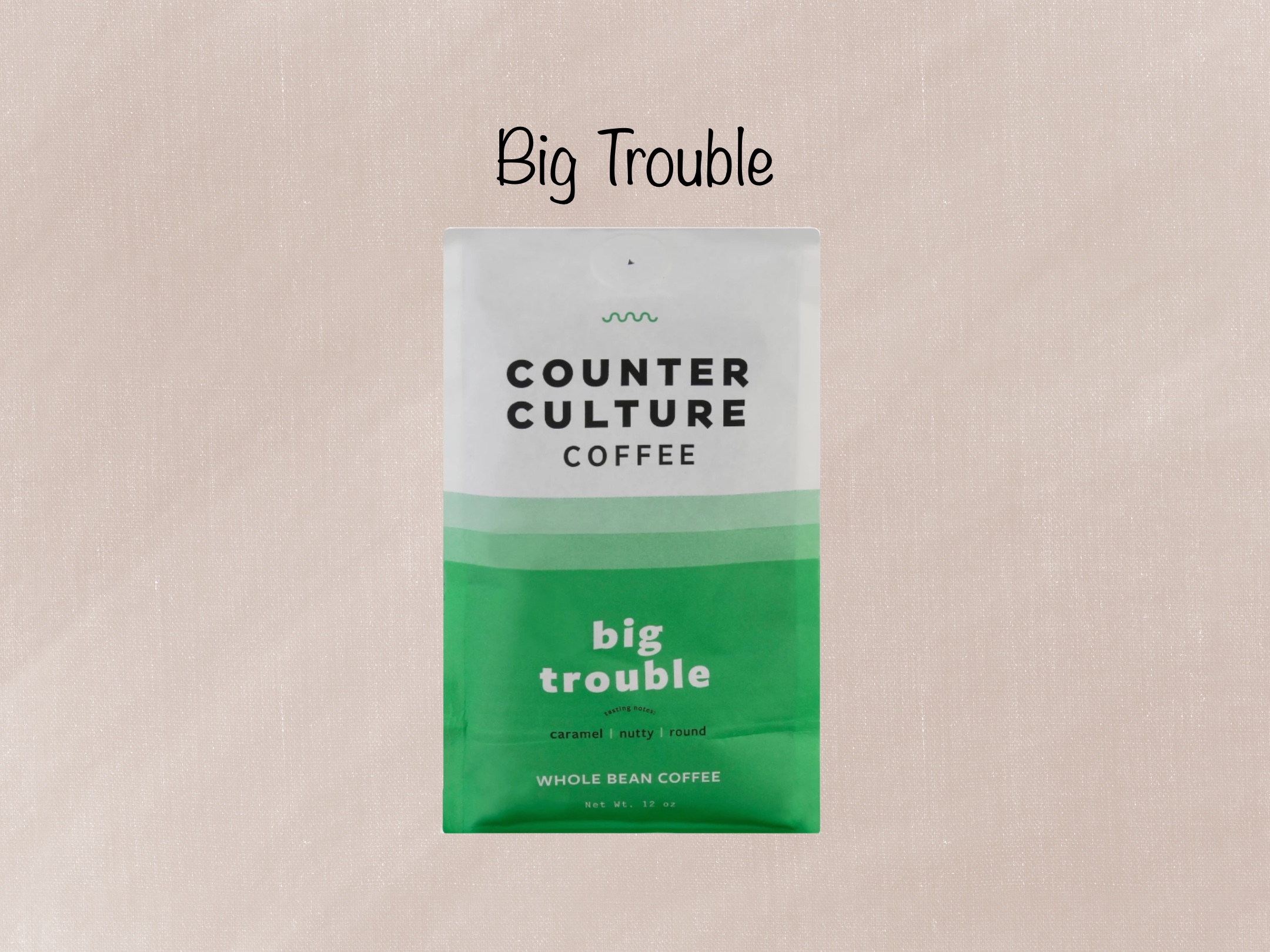 Big Trouble
Big TroubleCounter Culture
Price at Publish:
- Roast Level
- Medium
- Type
- Multi-Regional
- Approachability
- Crowd Pleaser
Big Trouble offers a pleasing blend of nutty, caramel, and chocolate flavors, making it an easy favorite. Sourced from sustainable producers around the globe, this medium-dark roast is carefully roasted for consistent quality. With its sweet flavors and satisfying medium body, Big Trouble has earned its place as one of Counter Culture's best-selling blends.
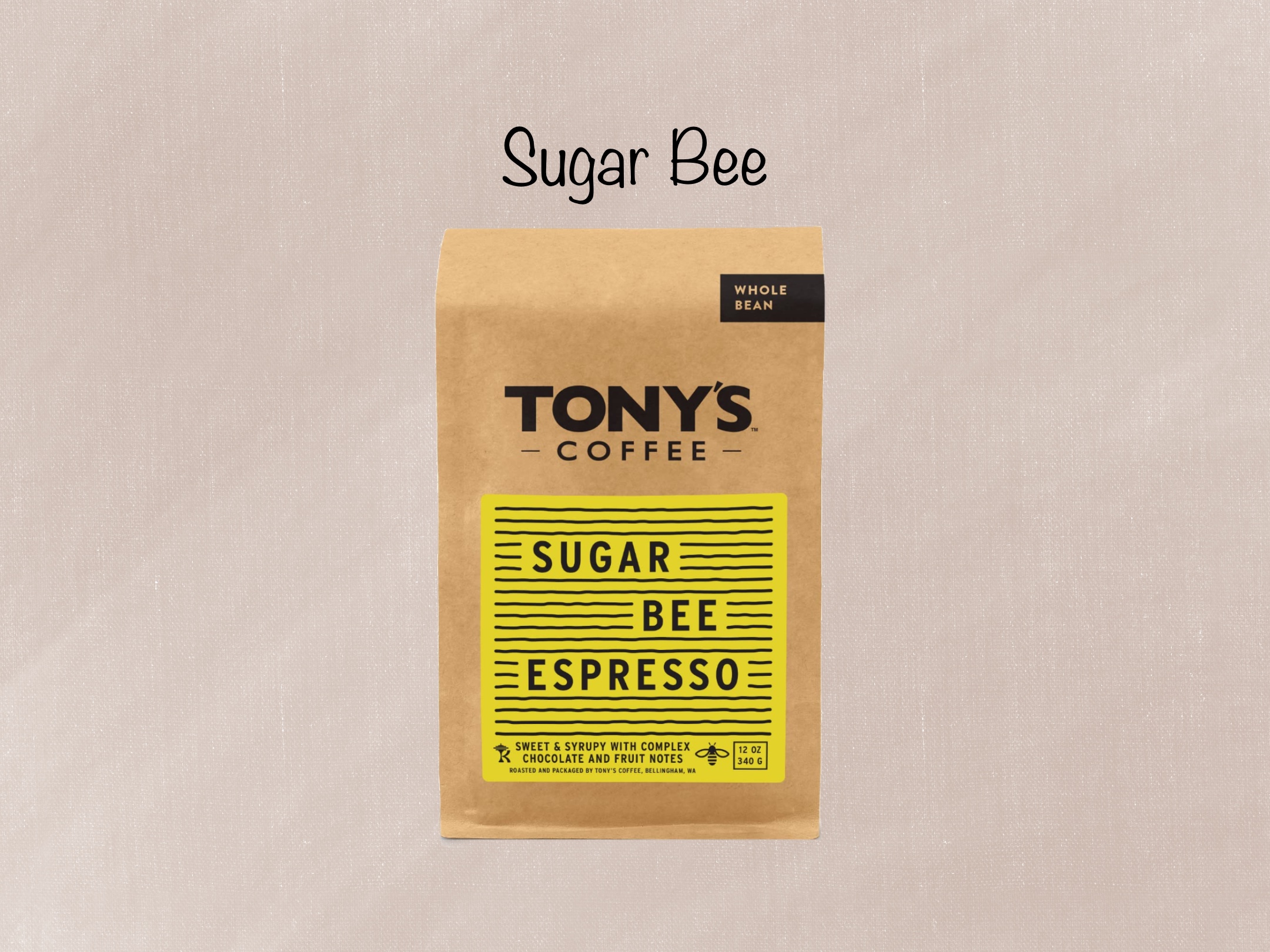 Sugar Bee Espresso
Sugar Bee EspressoTonys Coffee
Price at Publish:
- Roast Level
- Medium
- Type
- Multi-Regional
- Approachability
- Crowd Pleaser
Big Trouble offers a pleasing blend of nutty, caramel, and chocolate flavors, making it an easy favorite. Sourced from sustainable producers around the globe, this medium-dark roast is carefully roasted for consistent quality. With its sweet flavors and satisfying medium body, Big Trouble has earned its place as one of Counter Culture's best-selling blends.
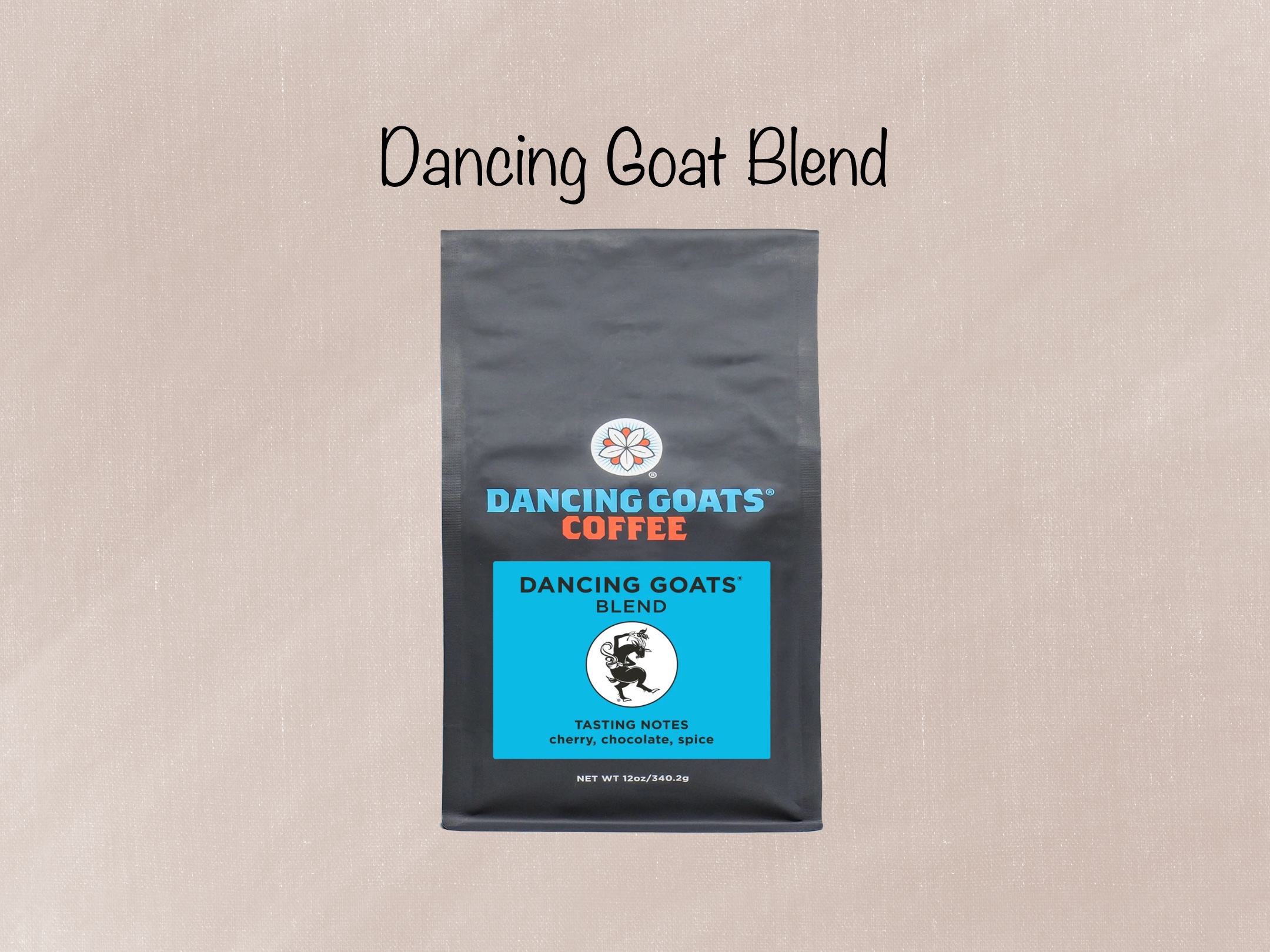 Dancing Goats Blend
Dancing Goats BlendDancing Goats Coffee
Price at Publish:
- Roast Level
- Dark
- Type
- Multi-Regional Blend
- Approachability
- For Classic Espresso Lovers
Dancing Goats Coffee's flagship blend, named after the legendary goats that discovered coffee's uplifting effects, offers a bold and toasty experience. This dark, smooth, and sweet blend is complemented by a delicate floral aroma. With its exceptionally clean acidity and heavy, nutty body, the signature blend excels both as a rich, crema-topped espresso and as a satisfying drip coffee. Its complexity is a testament to its quality, making it a favorite served daily in Dancing Goats® Coffee Bar cafes.
 Bronson Blend
Bronson BlendVerve Coffee
Price at Publish:
- Roast Level
- Dark
- Type
- Columbia Blend
- Approachability
- For Classic Espresso Lovers
Bronson is Verve's interpretation of a French Roast, delivering a smooth experience of silky dark chocolate and raw sugar sweetness. It is Verve's darkest roast, ideal for those who enjoy bold and robust coffee. This blend pairs exceptionally well with cream and sugar, making it a perfect choice for anyone who appreciates a strong and flavorful coffee.
 Ava Blonde Blend
Ava Blonde BlendDillanos Coffee Roasters
Price at Publish:
- Roast Level
- Light
- Type
- Columbia Blend
- Approachability
- For Those Looking To Experiment
Ava Blonde by Dillanos Coffee Roasters is a blend from Central and South America, roasted to highlight the best qualities of the beans. It's great as both an espresso and filter coffee, suitable for drip or French Press brewing. This coffee is known for its light body and smooth texture, complemented by sweet notes of almond and chocolate. Ava Blonde offers a medium-light roast with a malty chocolate flavor, making it an excellent choice for pour-over as well as espresso. It's a flavorful, well-balanced coffee, ideal for those who enjoy a versatile and delicious cup.
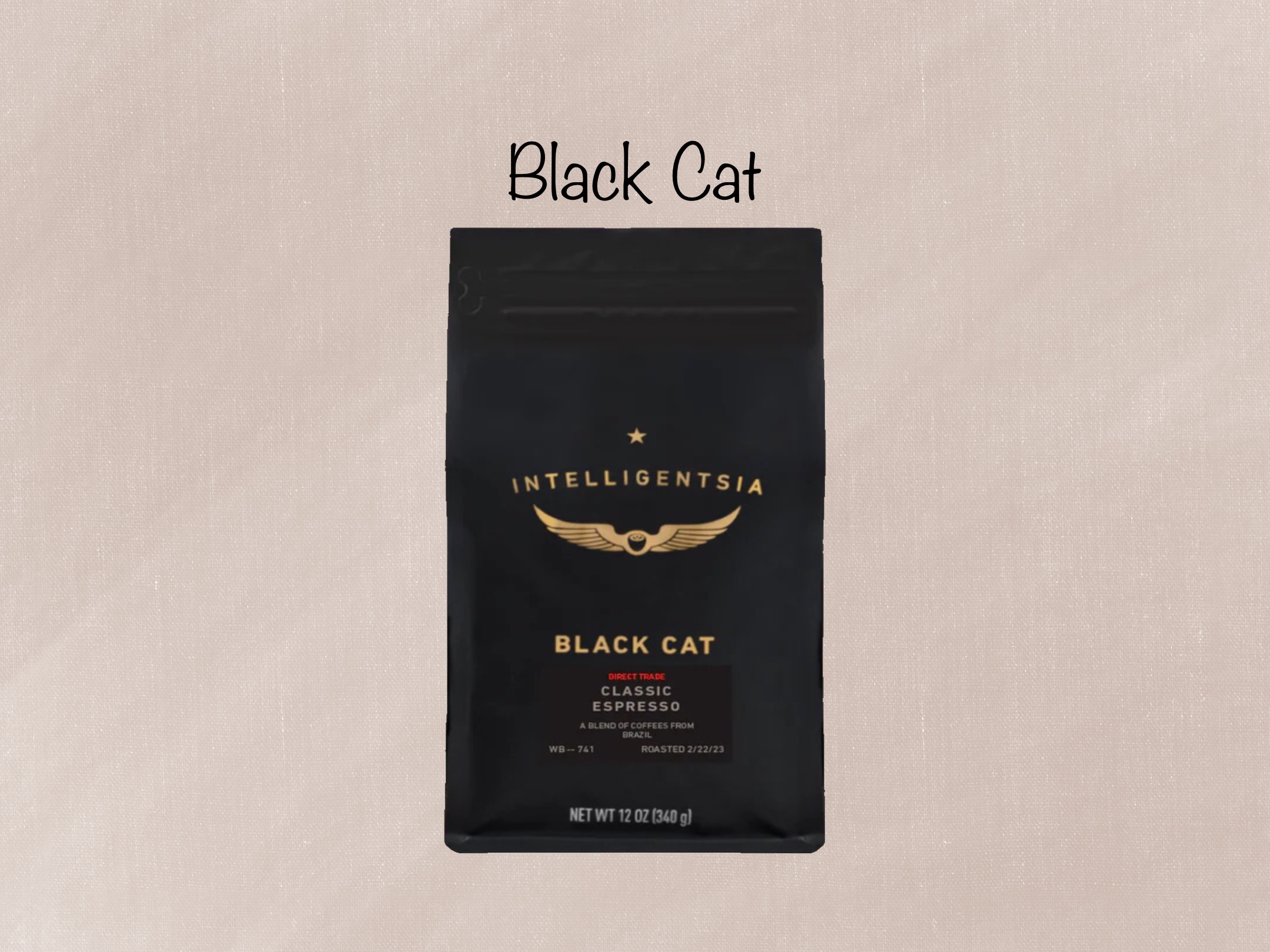 Black Cat Espresso
Black Cat EspressoIntelligentsia
Price at Publish:
- Roast Level
- Dark
- Type
- Brazil & Costa Rica Blend
- Approachability
- A Safe Bet
Intelligentsia's Black Cat Classic is their signature espresso blend, a staple since the roastery's inception in 1995. Crafted with Brazilian beans, Black Cat offers a contemporary take on traditional Italian espresso. This blend features a lighter roast (for espresso), setting it apart from classic, darker espresso roasts. Its flavor profile boasts notes of chocolate and molasses, delivering a smooth and rich experience that pays homage to its Italian roots while embracing a modern, nuanced approach to espresso. Perfect for those who appreciate a blend that combines tradition with a fresh perspective.::
 Geometry Blend
Geometry BlendOnyx Coffee Labs
Price at Publish:
- Roast Level
- Light Medium
- Type
- Colombia & Ethiopia Blend
- Approachability
- Modern Light Roast
The Geometry Blend from Onyx Coffee Lab combines washed Ethiopian coffee with honey-processed Colombian coffee. This blend creates a harmonious and complex flavor profile that is also approachable. With tasting notes of German chocolate cake, maple, blueberry, and spice, Geometry offers a rich and diverse coffee experience. It's versatile enough to be enjoyed both as a filter coffee and as an espresso, and it's easy to brew in either style. Geometry stands out as a blend that not only delivers on taste but also on adaptability, making it a favorite for a variety of coffee lovers.
